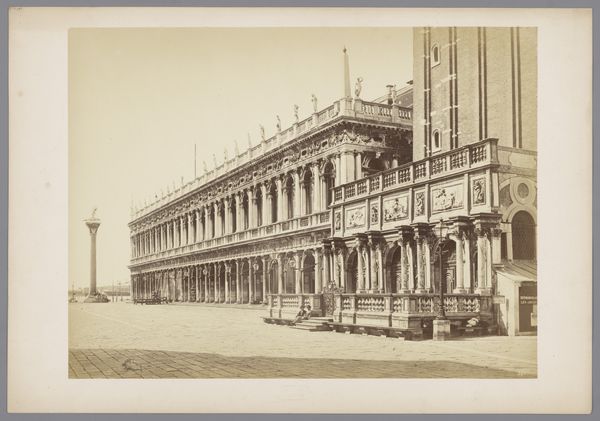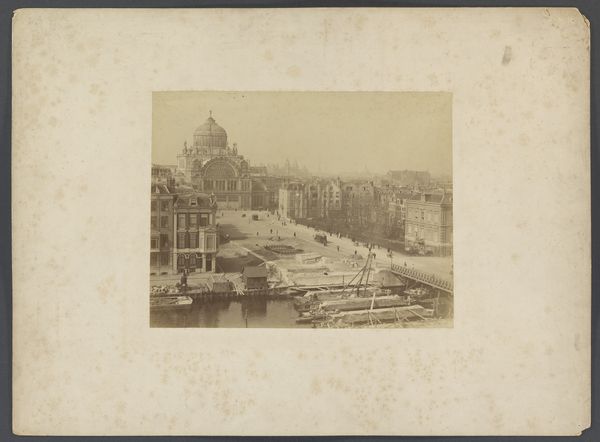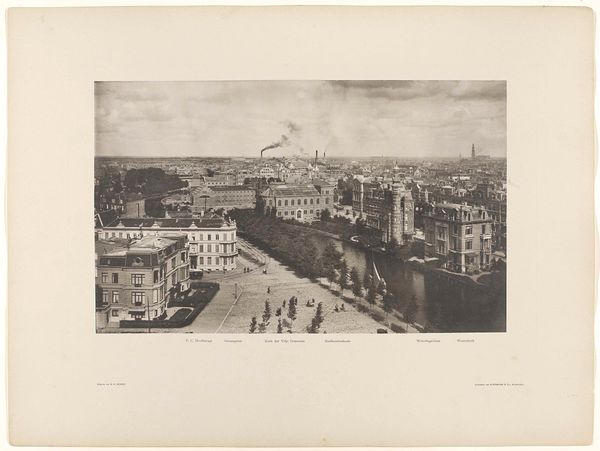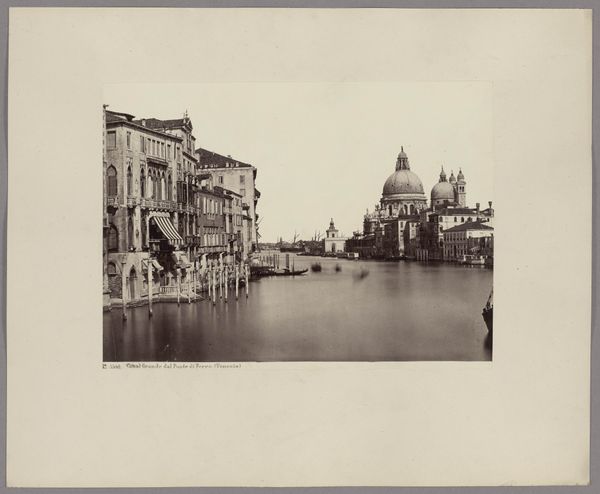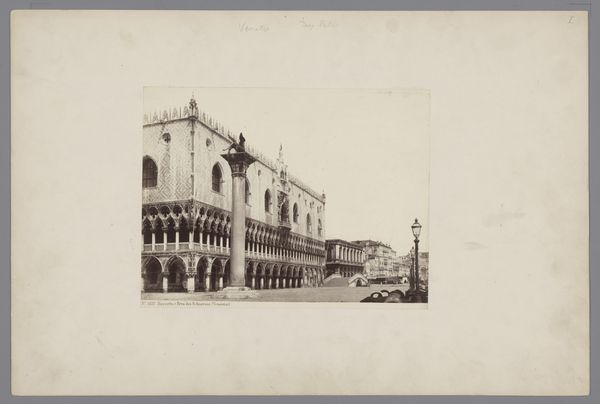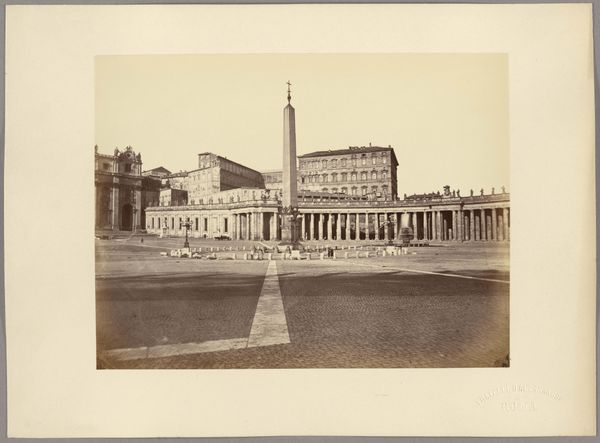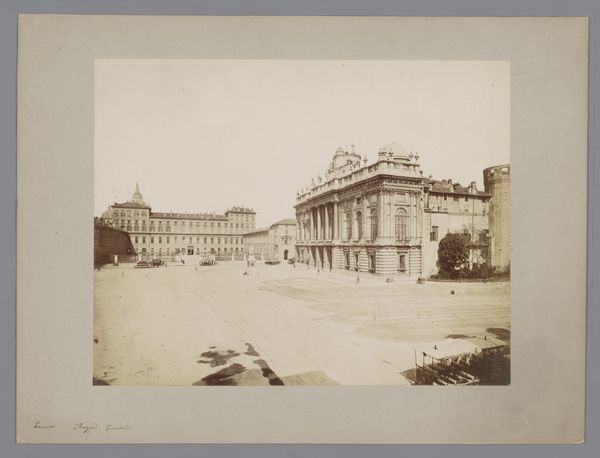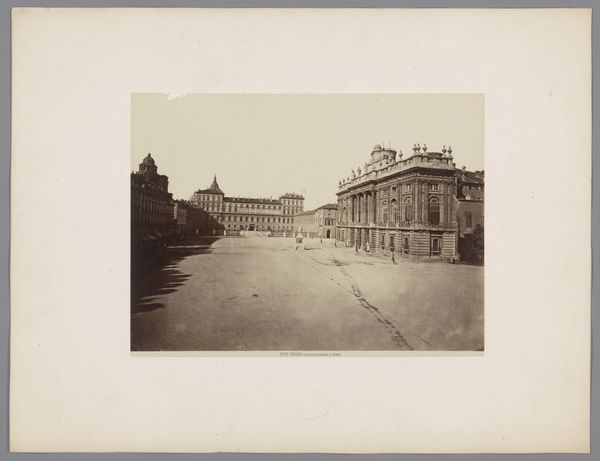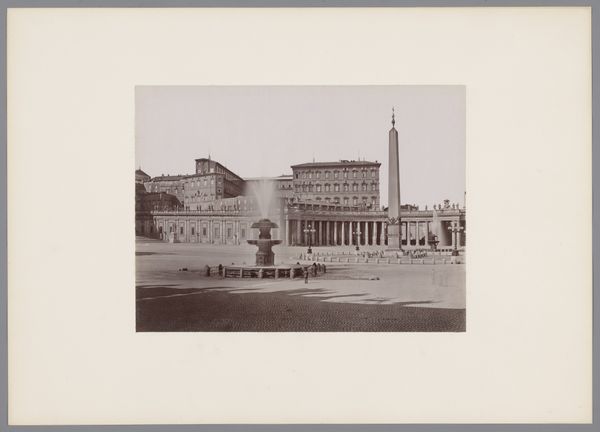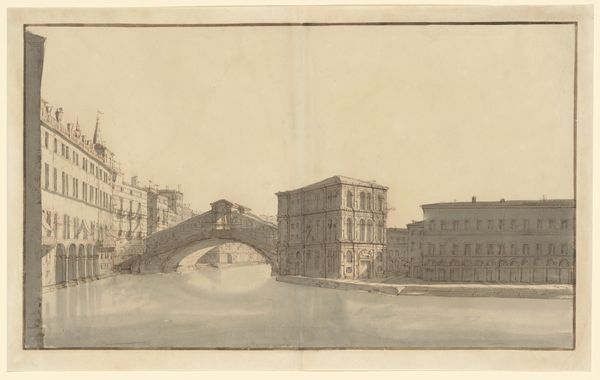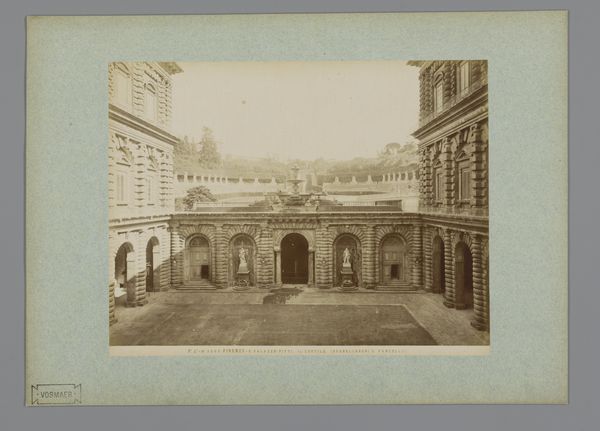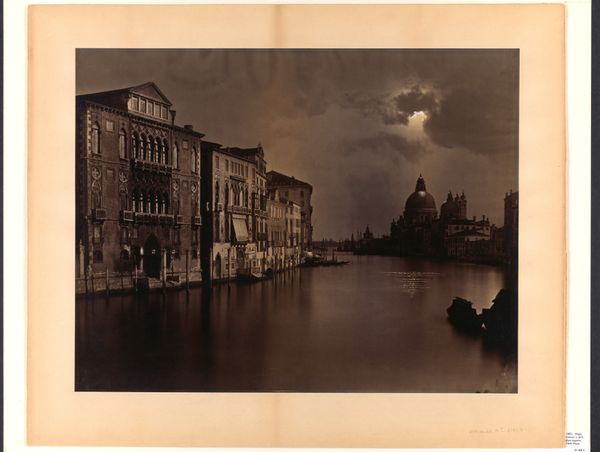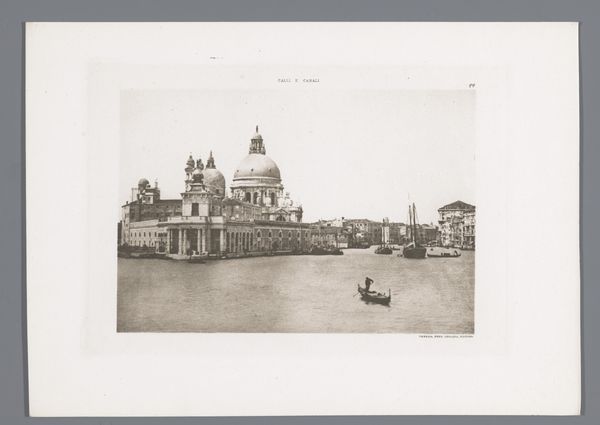
Copyright: Public Domain
Curator: I’m struck by the atmospheric stillness in Jakob August Lorent’s photograph, "Venice: View of Santa Maria della Salute from the Molo," taken around 1853. The sepia tones lend it an air of timelessness, almost a dream. Editor: Indeed. The image, an albumen print, possesses a serene beauty. We are looking at Venice, represented in a wide view where the tonal range creates an incredible softened affect, focusing on light and shapes, drawing attention to the architectural volumes of Venice’s famed structures, the Salute standing prominently in the distance. Curator: Absolutely, and seeing this photograph through a contemporary lens, it's hard not to think about Venice's complicated relationship with tourism and preservation. The Doge's Palace is prominent on the right, emphasizing its position of political power. Consider how the city functions as a performative space, especially then for 19th century tourists engaging with notions of Italian history and culture. Editor: Yes, and structurally, Lorent masterfully utilizes light to sculpt the forms, directing the viewer's gaze through the rhythmic repetition of arches and the contrasting textures of stone and water. Semiotically, each architectural detail, from the domes of the Salute to the intricate facade of the Doge’s Palace, acts as a signifier, contributing to a complex visual narrative. Curator: Think, too, of how photography itself was still a relatively new medium at this time. Its emergence offered new opportunities for documentary and artistic expression, inevitably shaping understandings of Venice and its socio-economic complexities for European audiences, thus further crafting the cultural identity of the city. Editor: The composition itself reflects this new vision, a controlled, objective recording of reality imbued with an artistic sensibility through careful orchestration of light, shape, and texture. Curator: I find myself wondering, also, about the environmental impact of mass tourism on Venice and how it influences contemporary perspectives of its cultural relevance. The romanticism with which it was initially received has turned, for many, to the threat of ecological disaster. Editor: Certainly, such layers enrich the viewing experience, providing avenues for a structural appreciation as well as reflection about its cultural implications, reminding us that any still image captures a mere slice of time, always open for a multi-layered interpretation. Curator: Viewing it through today’s eco-conscious climate offers such resonance. It allows us to explore this photograph and city as sites of ongoing negotiation, reflecting the complex realities of contemporary existence.
Comments
No comments
Be the first to comment and join the conversation on the ultimate creative platform.
